When it comes to your marketing strategy, email is an essential piece to the puzzle. A lot of your efforts rely on a strong email campaign. Unfortunately, there are many people who don’t put enough emphasis on using emails to their full potential.
Hopefully, that’ll change once more marketers learn about the real advantages you can get from leveraging a strong HTML email.
Types of Emails: HTML and Plain Text
There are two common types of emails that people use: HTML and plain text. One is definitely flashier than the other, and it’s not a hard guess. Let’s define them real quick.
HTML
These are your more stylized and formatted emails. Using HTML and inline CSS coding, you can make the message you send out appear incredibly engaging and visually stimulating. Here’s a great example:
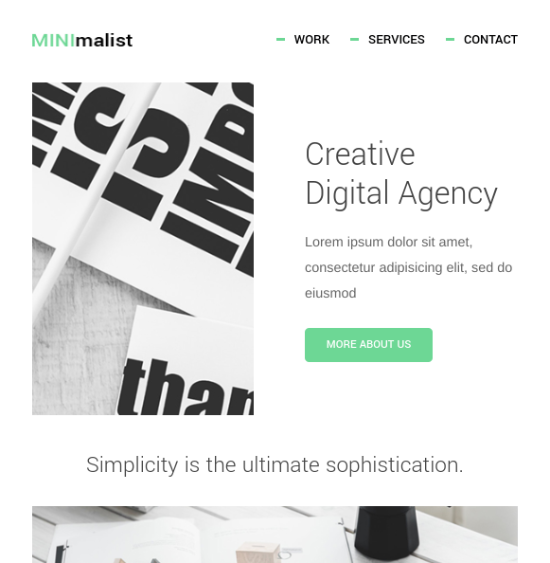
Source: MailBakery
Plain Text
On the opposite side of the spectrum, plain text emails contain just that, plain text. There’s no formatting involved, and it often looks like this:
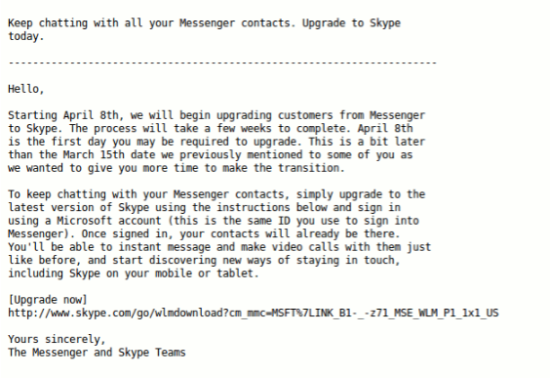
Source: Send Check It
Why HTML Emails Are Vital for Marketing
It’s pretty clear which email type version captures the eye more, isn’t it? But HTML emails are important to your strategies for more reasons than just their pretty looks.
Improved Engagement
Human beings are visual creatures. We process images a lot faster than we do text. Keeping that in mind, there’s a great deal of value in using HTML emails to entice your recipients to actually open your message.
The chances of your email getting deleted are much higher if, at a glance, all your leads see is black text and blue hyperlinks than if they open an image of your product or well-placed reviews of your service.
Better Reader Experience
How excited are you when you open an email and see what’s basically an essay sitting in front of you? How often do you actually read it if it doesn’t contain personal information in it?
Well, your audience feels the same way.
As a marketer, the goal should be to get your information across as easily as possible. By highlighting the main points and changing the wall of text to an easier-on-the eyes HTML template, your readers will be able to find what’s important to them a lot faster.
Tracking Capabilities
A lot of email services that provide the tools necessary to send HTML emails allow for email tracking also.
You can analyze your engagement and conversion numbers, building reports around what content, templates, and promotions perform best.
Higher Conversions
Speaking of conversion data, HTML emails are considerably easier to interact with than plain text emails.
Remember when we said that people are more likely to actually engage with a styled email? Make sure that you’re giving them features to engage with.
Attractive calls to action (CTAs) and clickable links won’t only encourage readers to interact with your email. It’ll drive traffic to your website as well. Spark interest in them with an impressive template so that their curiosity will guide them further down your sales pipeline.
How to Create an HTML Email the Easy Way
If you’re not that code-savvy and want to take an easier way, you can look up some HTML email templates. Here are just a few great examples of template providers.
Bee
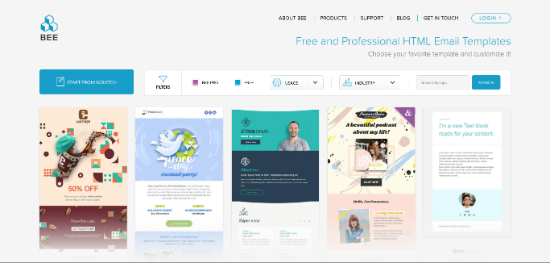
Bee is a great email editor that offers hundreds of drag-and-drop email templates for free.
Designed for recipient response and mobile viewing in mind, you have the opportunity to upgrade to their Pro plan for an expanded customization toolbar or purchase their plugin so you have free reign of design.
Prices range from $15/mo. to $1,800/mo., depending on what features you want available.
Stripo
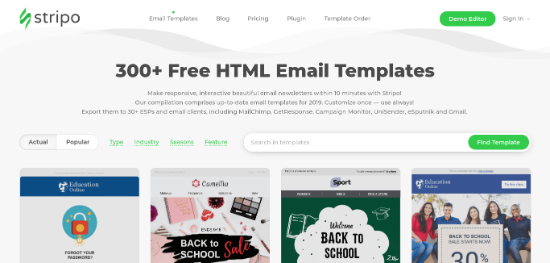
Stripo provides over 300 different free email templates meant for a variety of campaigns and purposes. You can select the right design based on type, industry, season, and features, guaranteeing options for your taste.
On their free plan, you can send up to five test emails a day to make sure that you’re happy with the design. Feature availability expands if you purchase any of their plans, which start at $8.33/mo.
HTML Email
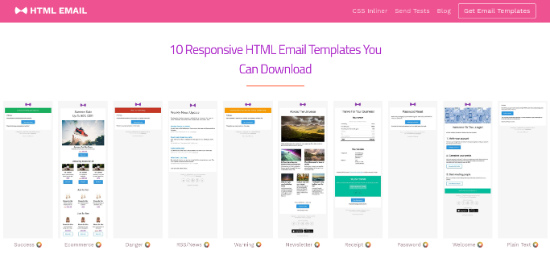
Supported on all major email providers, HTML Email offers 10 email templates designed for specific tasks.
You can customize them however you need for your brand and test their appearance. The price for a single project license is $49.
Campaign Monitor
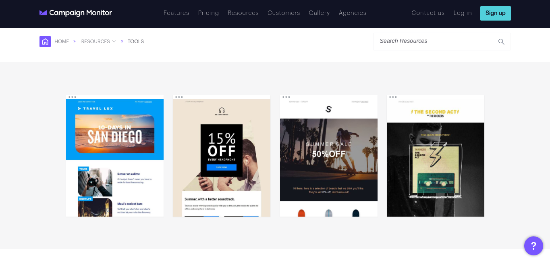
Campaign Monitor boasts an easy drag-and-drop system where you can create incredibly customized HTML emails for any campaign.
With a “visual journey designer”, you can create emails meant for different stages of the buyer’s journey so that your automation efforts go off without a hitch.
With its own CRM, there are several different tools offered to aid in your email marketing. Pricing varies depending on how many people you have on your email list, but their basic plan starts with $9/mo. for 500 recipients.
Envato Market
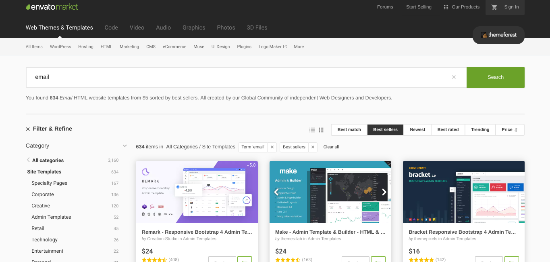
Envato Market has over 600 templates in its catalog available for purchase. Offering in-depth previews of every email template, you can observe the different personalization features before you buy.
The more basic templates are priced at $5 and climb from there.
How to Create an HTML Email the Fun Way
For those who are more comfortable with HTML, or just feeling brave, you can make your own HTML email. You’ll have more control over the code in your emails, making it easier to design them exactly how you want.
The Basics of HTML Email
Let’s go over how your emails are broken down. An email has two parts:
- Header section: This is the top, or “head,” of your email. Any code entered between <head> and </head> are going to be translated into the header section.
- Body: This is basically the rest of your email. Any code placed between <body> and </body> is going to populate in the body and structure the email.
Best Practices for Coding HTML Email
When it comes to HTML coding, design and development can be tricky if you aren’t fluent. Here are some best practices to keep in mind to help you along the way.
Make Your Email Easy to Load.
If an email doesn’t populate quickly, it’ll either be closed or deleted as fast as it takes for the recipient to tap a button.
An HTML email’s load time can be slowed down for a variety of reasons. Multiple images, custom fonts, and a lot of links will all create a time buffer on rendering.
Keep your fonts to a standard web selection and only include images that are going to add value to the rest of your email’s content.
Make Your Email Device-Friendly.
Nowadays, people access their emails from everywhere on a wide range of devices. What’s important to keep in mind is that smartphones, tablets, iPads, laptops, and desktops all have different screen sizes and renderings.
The way your email will appear on one device isn’t exactly how it will appear on another. To get around this, keep your design formats simple and neat.
The less you have going on, the less likely your look will go awry. Besides, a template that’s too busy can easily turn a customer off from your brand.
Side note: The same goes for email providers. Gmail loads differently than Yahoo and Outlook. Do some research to learn how the major email clients load HTML and CSS.
Make Your Email with Contingency Plans.
If for any reason your recipients do have trouble viewing your email, you should provide them with options to work around it. Oftentimes, an HTML email will have a plain text email alternative for recipients who can’t load the original.
Or, a more conversion-friendly route would be to build a webpage version of your email. A lot of companies include a “view as webpage” option where all of the details from the email are accessible on this page.
The need for an alternative could be because the email isn’t loading or because the email provider won’t process the code. Not every person is going to follow these leads, but those who do are displaying a true interest in what you have to offer.
Test Your Email.
When it comes to anything involved in your marketing strategies, never let a component just go live if you can test it first, especially when there’s any considerable amount of code involved.
Send a few test emails out to make sure that they render correctly. Open them on different devices if you can so you can get a true gauge of what might be failing and what needs adjustments.
If you’re a more advanced designer who’s looking to build your own HTML, you can find more best practices in this guide.
Additional Resources for Building HTML Emails
There are plenty of amazing resources to consider when looking for a bit of help with the process. Here are a few to look to when you need support:
MJML
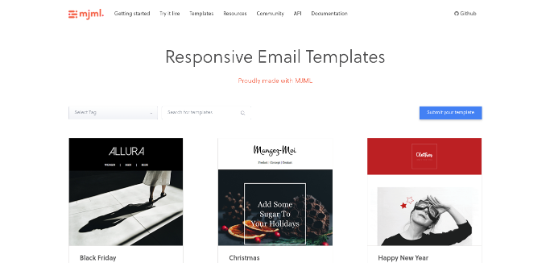
MJML works to simplify what it takes to design and develop responsive emails. They provide a few templates for you to practice on, but the goal is for you to be able to write HTML 5 markup to use with your email sending software.
Foundation
Absolutely free, Foundation allows you to play with a simple CSS framework to build HTML 5 responsive email templates. You’ll be given a pre-built grid with each template that you can customize to your liking.
Benchmark
With an easy drag-and-drop system, Benchmark gives marketers who aren’t that technically fluent a chance to build their own newsletters.
With A/B testing, campaign analytics, and spam testing tools, you can be sure that your emails are performing well.
HubSpot
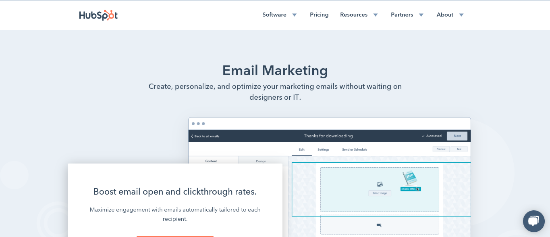
HubSpot’s email tool has an easy-to-use email editor that allows you to customize your messages to your needs.
You’ll have access to testing, reporting, and can integrate your HubSpot CRM to make segmentation that much easier. You’ll be able to execute a successful campaign with ease and confidence.
HEML
HEML provides HTML email building capabilities without all the stress and complications that comes with some other platforms.
It’s clean and simple interface makes writing code a breeze, taking the headache out of creating an email template.
Pulp
Pulp gives you a blueprint to building an email HTML code. Designed for quickness and ease, this builder is a valuable tool for those who are trying to move efficiently.
EDMdesigner
A more advanced email builder, EDMdesigner offers a pretty wide variety of templates to build responsive emails on.
It uses a drag-and-drop user interface to help with design, and you can even save different elements so that you can return to different templates whenever you like.
Unlayer
Unlayer not only will allow you to build responsive emails, it’ll also provide you with a live demo of your work.
You can add custom tools to the ones already built into its interface and allow cross-functional teamwork on a project. Collaboration will be optimized as you design your email in blocks and stages.
Cerberus
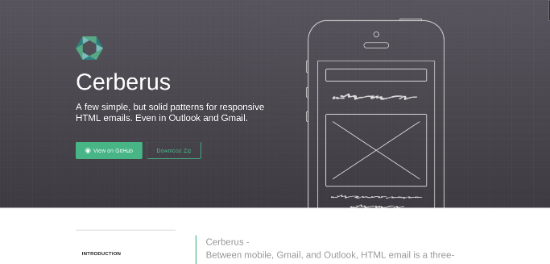
Cerberus has three different template types for you to choose from: fluid, responsive, and hybrid.
The idea is to allow you the chance to edit, adapt, and build on top of existing code in an effort to optimize for mobile viewing. It’s compatible with most email clients and is pretty popular among developers today.
Constant Contact
With a valuable user onboarding program in place, Constant Contact’s interface is easy to navigate. You can build newsletters off of different templates, customize them to your brand, and edit them to your heart’s content.
For those new to email building, Constant Contact has a really strong support team ready to help you out.
Start Building Amazing HTML Emails Today
A solid email marketing campaign will bolster your marketing efforts, but it can only improve with the addition of HTML emails. Now you know how to build them yourself, so there’s no more excuses.
Give your strategy the makeover it needs to include this excellent technique.


Micah Lally
I’m a Content Writer at Bluleadz. I’m a big fan of books, movies, music, video games, and the ocean. It sounds impossible to do all of those at the same time, but you’d be surprised by the things I can accomplish.